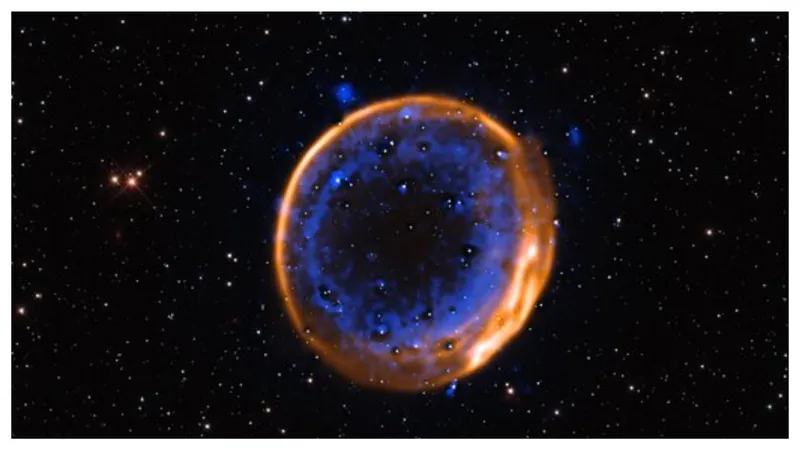
Could a Star Really Die Twice? Astounding Discovery of a Cosmic ‘Double Detonation’
2025-07-02
Author: Rajesh
A Groundbreaking Cosmic Find
In a remarkable revelation, astronomers using the Very Large Telescope (VLT) and the Multi Unit Spectroscopic Explorer (MUSE) have unearthed compelling evidence suggesting that a star can indeed die not once, but twice! Located over 160,000 light-years away, the supernova remnant SNR 0509-67.5 has been illuminating our understanding of stellar explosions since its formation more than 300 years ago.
A New Perspective on Supernovae
The remnants of this supernova exhibit astonishing clues indicating that its progenitor star experienced two explosive events. This groundbreaking finding hints that some stars might achieve supernova status without ascending to the critical Chandrasekhar limit, which is approximately 1.4 times the mass of the Sun.
White Dwarfs: The Stellar Vampires
Research backed by ESO and observations from the renowned Hubble Space Telescope confirm SNR 0509-67.5 as a white dwarf star—these peculiar celestial entities are pivotal in our studies of cosmic distances. Known as Type Ia supernovas, the explosions emitted by these stars function as universal yardsticks; their consistent brightness earns them the title of “standard candles.”
The Mystery Behind the Bangs
Despite their significance, the exact process that ignites these explosions remains shrouded in mystery. Traditionally, scientists believe that Type Ia supernovas originate in binary star systems. When one star dies and becomes a white dwarf, it may enter a close orbit with a still-living companion. This emphasizes the notion of 'stellar vampire,' as the white dwarf siphons off material from its partner until it reaches that critical threshold.
Unraveling the Double Detonation Mechanism
Recent theories explore the possibility of a double detonation scenario. As the white dwarf feasts on its companion’s helium, it may inadvertently trigger an initial explosion. This eruption generates a shockwave that travels inward, striking the core and sparking a second, more powerful detonation, culminating in a supernova—potentially before the white dwarf even surpasses the Chandrasekhar limit!
Leave Your Theories Behind!
The evidence supporting this double-detonation phenomenon is not just a fleeting observation; it has left a lasting imprint—in the form of a 'fingerprint'—on the remnants of the SNR 0509-67.5. This groundbreaking research is reshaping our understanding of supernovae and the life cycles of stars. Who knew that a star could meet its end in such a spectacular and complex manner?




 Brasil (PT)
Brasil (PT)
 Canada (EN)
Canada (EN)
 Chile (ES)
Chile (ES)
 Česko (CS)
Česko (CS)
 대한민국 (KO)
대한민국 (KO)
 España (ES)
España (ES)
 France (FR)
France (FR)
 Hong Kong (EN)
Hong Kong (EN)
 Italia (IT)
Italia (IT)
 日本 (JA)
日本 (JA)
 Magyarország (HU)
Magyarország (HU)
 Norge (NO)
Norge (NO)
 Polska (PL)
Polska (PL)
 Schweiz (DE)
Schweiz (DE)
 Singapore (EN)
Singapore (EN)
 Sverige (SV)
Sverige (SV)
 Suomi (FI)
Suomi (FI)
 Türkiye (TR)
Türkiye (TR)
 الإمارات العربية المتحدة (AR)
الإمارات العربية المتحدة (AR)